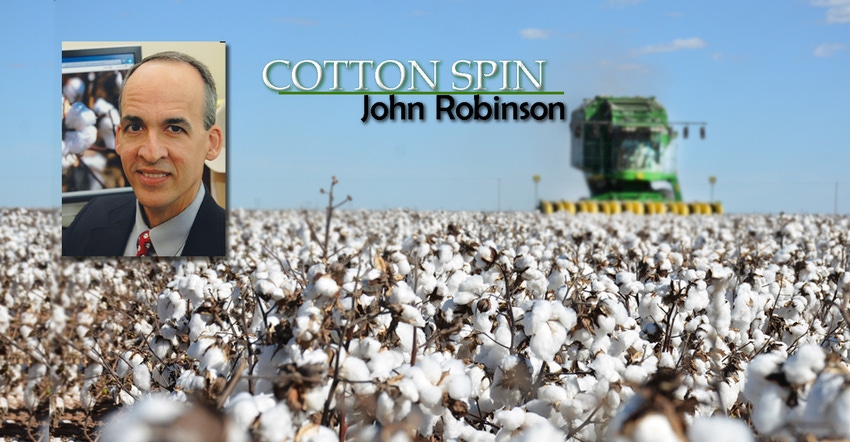
There are more questions than usual about the U.S. cotton supply and demand picture. The first question is the regular annual acreage variable. The current milestone estimate (from USDA, circa March 31) is 12.2 million planted acres of upland and pima combined. If this number is accurate, it already sets the market up for lower production, tight ending stocks, and continued high prices.
The second question involves the level of abandonment (i.e., unharvested acres). The drought situation in the southern plains is bad enough to assume widespread failure of dryland acreage, with U.S. average abandonment between 25% and 30%. However, there is plenty of risk around the abandonment number until at least mid-summer. If the outcome is higher abandonment, it will result in even tighter ending stocks, e.g., two million or fewer, which will be even more price supporting.
A related question, of course, is the weather. The La Niña condition that is associated with the current warmer and drier conditions is forecasted to continue through the summer, with a 50 to 55% chance of continuing through the fall. That forecast may tilt the odds in favor of less production, tighter supplies, and higher prices. But it is not a certain thing.
The wrap-up question will be the average yield per harvested acre. If a lot of low-yielding dryland acres fail, then average yields might not be that bad. But this year there is the extra wrinkle. The high price of fertilizer and other inputs may result in fewer/lower applications of these inputs. For crops that make it to harvest, the result could be lower-than-expected yields, over and above the drought effect on yields. This kind of effect would not be confirmed until harvest time. This means that there may be more production uncertainty for a longer period of time than normal. And that means that the typical weather market speculation and price volatility may stretch longer into the Fall than usual.
For additional thoughts on these and other cotton marketing topics, please visit my weekly on-line newsletter at http://agrilife.org/cottonmarketing/.
Read more about:
DroughtAbout the Author(s)
You May Also Like




